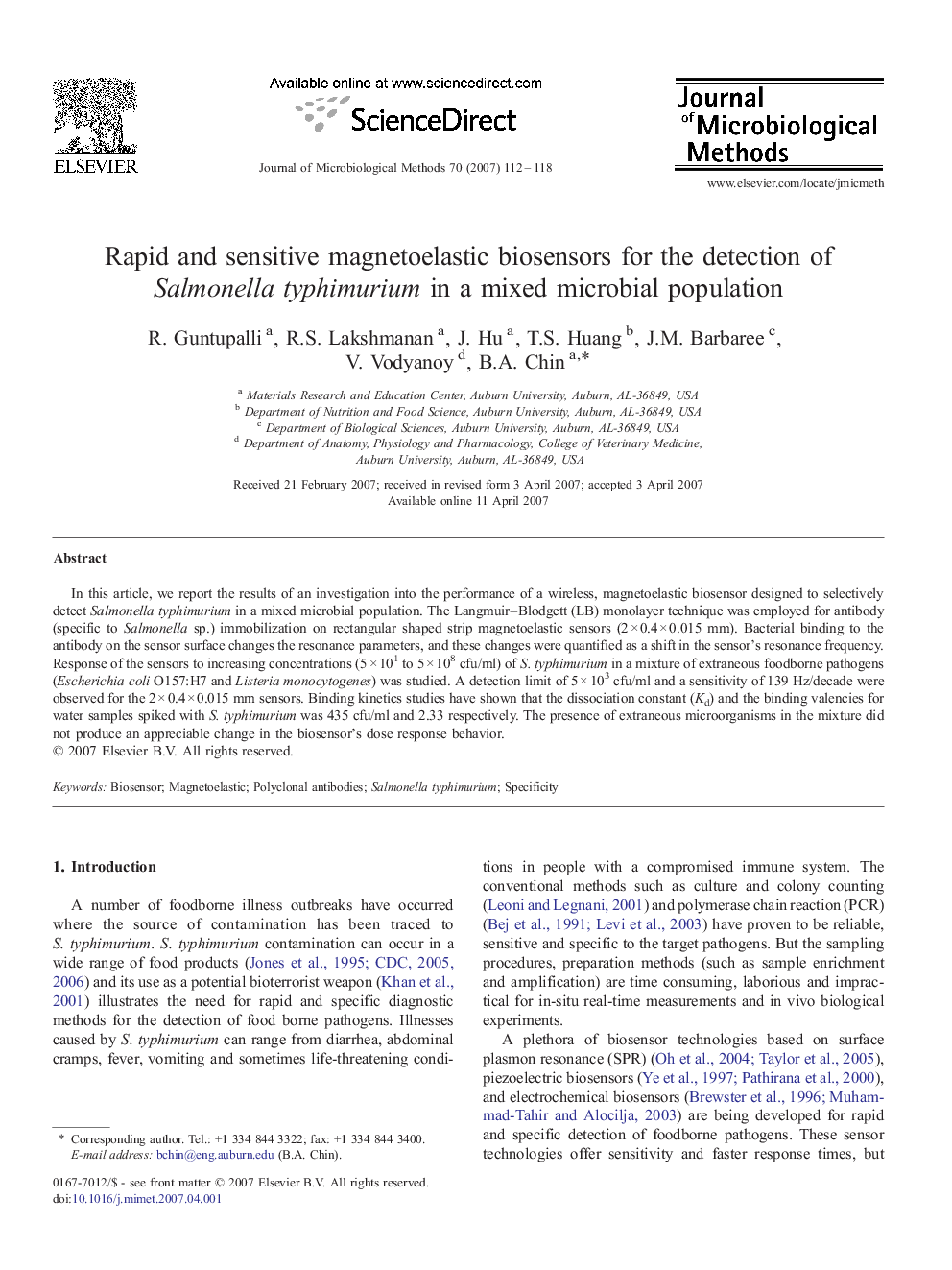| Article ID | Journal | Published Year | Pages | File Type |
|---|---|---|---|---|
| 2091769 | Journal of Microbiological Methods | 2007 | 7 Pages |
In this article, we report the results of an investigation into the performance of a wireless, magnetoelastic biosensor designed to selectively detect Salmonella typhimurium in a mixed microbial population. The Langmuir–Blodgett (LB) monolayer technique was employed for antibody (specific to Salmonella sp.) immobilization on rectangular shaped strip magnetoelastic sensors (2 × 0.4 × 0.015 mm). Bacterial binding to the antibody on the sensor surface changes the resonance parameters, and these changes were quantified as a shift in the sensor's resonance frequency. Response of the sensors to increasing concentrations (5 × 101 to 5 × 108 cfu/ml) of S. typhimurium in a mixture of extraneous foodborne pathogens (Escherichia coli O157:H7 and Listeria monocytogenes) was studied. A detection limit of 5 × 103 cfu/ml and a sensitivity of 139 Hz/decade were observed for the 2 × 0.4 × 0.015 mm sensors. Binding kinetics studies have shown that the dissociation constant (Kd) and the binding valencies for water samples spiked with S. typhimurium was 435 cfu/ml and 2.33 respectively. The presence of extraneous microorganisms in the mixture did not produce an appreciable change in the biosensor's dose response behavior.
